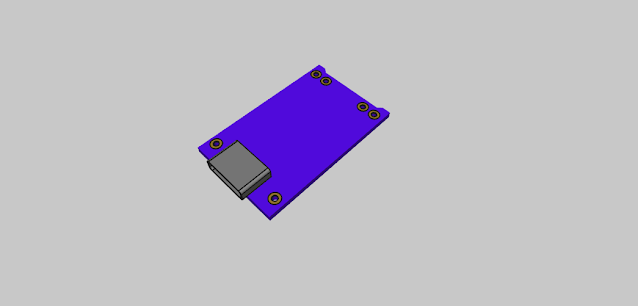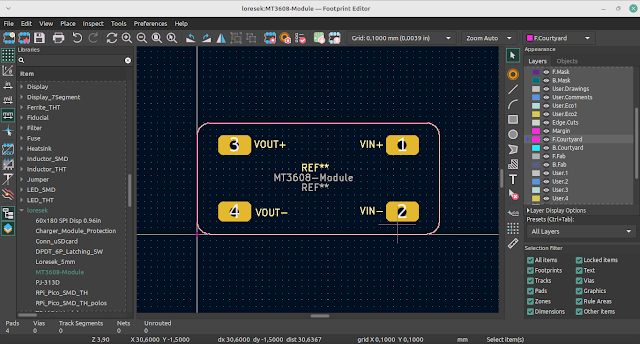Explore LTE-M and Tracking Technologies with Rusty Tracker: An Open-Source Learning Board with Rust Firmware
The Rusty Tracker is based on the Nordic nRF9160 + uBlox M10S GNSS and uBlox R422-M10S, which features an Arm Cortex-M33 processor and support for LTE-M and NB-IoT cellular technologies.
This board comes with a built-in GPS module and an external UFL connector for connecting an external antenna. The Rusty Tracker also features an accelerometer, temperature sensor, and a microSD card slot for storing data.
PCB Design
 |
| uBlox R422-M10S version |
PCB design was created using KiCad, which is a free and open-source software for electronic design automation (EDA). KiCad is a popular tool for creating PCB layouts because it has a user-friendly interface, is highly customizable, and supports a wide range of file formats.
To create a PCB design for the Rusty Tracker, you will need to download and install KiCad on your computer. Once you have KiCad installed, you can open the Rusty Tracker's PCB design files, which are available on the project's Github repository.
To open the Rusty Tracker's PCB design files in KiCad, follow these steps:
- Download the PCB design files from the Rusty Tracker Github repository.
- Extract the files from the downloaded ZIP archive to a folder on your computer.
- Open KiCad and click on "File" in the menu bar.
- Select "Open" and navigate to the folder where you extracted the Rusty Tracker PCB design files.
- Select the file named "rusty-tracker.kicad_pcb" and click "Open."
Once you have opened the Rusty Tracker's PCB design in KiCad, you can view and edit the layout, add components, and create your own version of the Rusty Tracker. Keep in mind that designing a PCB layout can be a complex process, and it may require some knowledge of electronics and circuit design.
Features
One of the unique features of the Rusty Tracker is its open-source firmware. The firmware is written in Rust, a modern systems programming language that provides memory safety, thread safety, and performance. The Rusty Tracker firmware is open-source and available on Github, allowing users to modify and customize it to suit their needs.
The Rusty Tracker is designed for learning and experimentation. The board comes with a range of example applications that demonstrate how to use the various features of the board. Users can experiment with different tracking technologies and develop their own applications using the Rust programming language. The board also includes a J-Link debugger and support for the Nordic nRF Connect SDK, which provides a range of libraries and tools for developing embedded applications.
Applications
The Rusty Tracker is an excellent tool for learning about LTE-M and tracking technologies. This device is small, portable, and easy to use, making it ideal for experimenting with different tracking technologies.
The board's open-source firmware and support for the Rust programming language make it an excellent platform for developing embedded applications. The Rusty Tracker is also a cost-effective solution for learning and experimentation, making it an excellent choice for students, hobbyists, and professionals alike.
Conclusion
The Rusty Tracker is a versatile learning board for LTE-M and tracking technologies. With its open-source firmware and support for the Rust programming language, this board is an excellent platform for learning and experimentation.
The Rusty Tracker is an ideal tool for students, hobbyists, and professionals who want to explore the world of tracking technologies and develop their own applications. If you are interested in learning more about the Rusty Tracker, visit the Github repository below for more information.











